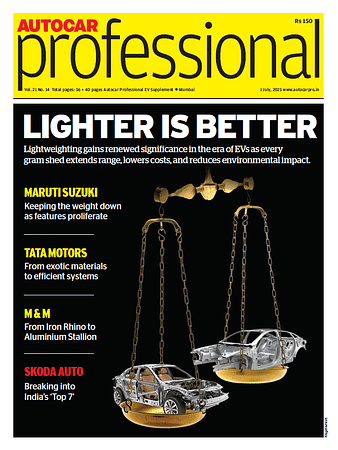India's passenger vehicle market navigates inventory bumps
The Federation of Automobile Dealers Associations (FADA), the industry body, is urging OEMs to exercise greater caution in production planning.
Car manufacturers (OEMs) in India are facing a familiar foe: rising inventory levels. While production has ramped up, demand remains sluggish, leaving dealers with excess stock. This is putting a strain on the traditionally cozy relationship between OEMs and their dealer networks.
The Federation of Automobile Dealers Associations (FADA), the industry body, is urging OEMs to exercise greater caution in production planning. Manish Raj Singhania, FADA president, warns against a return to "old habits of over-production," that leaves dealers holding the bag.
Dealers squeezed between costs and OEM demands
Dealers typically secure bank loans to finance vehicle stocks. These loans come with interest payments, usually due within 60 days. Recently, OEMs have requested banks to extend the revolving credit facility that they provide to dealers to 90 days, to facilitate the dealers to hold higher levels of inventory.
While this may seem beneficial to dealers, it also creates a hidden cost for them. "They (OEMs) will say you have three months to rotate that inventory," argues a Rajasthan-based dealer, "but that allows them to dump more stocks."
The rising inventory burden comes at a time when dealerships are already grappling with increasing operational costs due to inflation, including employee salaries. Margins have been further squeezed by reduced insurance margins, a result of new regulations.
Inventory levels not yet at a crisis point, but concerns mount
While current inventory levels of around 60 days (roughly 550,000 vehicles) are concerning, they haven't reached the disastrous heights of five years ago. Back then, inventory levels of close to 70 days contributed to significant losses and the ultimate closure of over 280 dealerships.
FADA’s Singhania highlights rising interest costs as a major worry, especially when combined with other financial pressures. He also reiterates FADA's long-standing demand for a reduction in the Goods and Services Tax (GST) on entry-level vehicles, arguing that it would stimulate demand.
The road ahead: Delicate balancing act
The Indian car market finds itself in a precarious position. OEMs need to strike a balance between production and demand to avoid dealer distress. Dealers, meanwhile, are caught between rising costs and the pressure to absorb higher inventory levels. Collaborative efforts, potentially involving financial support from OEMs, are crucial to navigate these headwinds and ensure a smooth ride for the industry.
RELATED ARTICLES
Govt to Release PM E-Drive Subsidy Guidelines for Electric Ambulances by Year-End
Electric ambulances have been included for demand incentives under the PM E-Drive scheme. Only one electric model made b...
Mercedes-Benz India Sees Flat-to-Single-Digit Growth in 2025: MD Iyer
Managing Director Santosh Iyer expects a high base, price hikes, and geopolitical uncertainty to weigh on the second hal...
Mercedes-Benz India Begins FY26 with Highest-Ever Q1 Sales
The launch of the GLS AMG Line adds to Mercedes-Benz’s SUV offerings and aligns with its broader strategy to strengthen ...





 By Autocar Professional Bureau
By Autocar Professional Bureau
 17 Jun 2024
17 Jun 2024
 4297 Views
4297 Views





 Kiran Murali
Kiran Murali



 Darshan Nakhwa
Darshan Nakhwa

